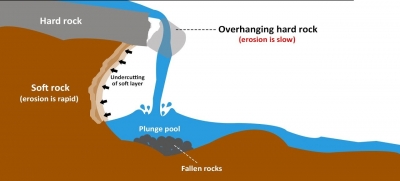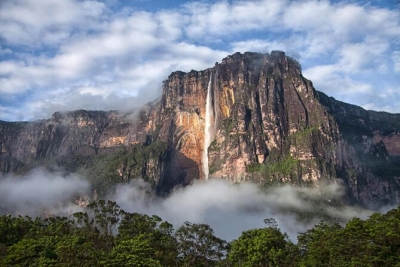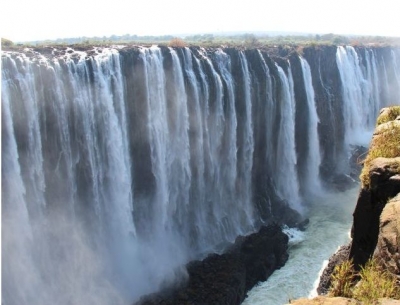HOW DO WATERFALLS FORM?

|
A waterfall develops when the bed of the river changes from hard to soft rock. As the force of the water wears away soft rock faster, the level of the softer riverbed drops, and the river plunges over a ledge of hard rock. The depth of the fall increases over time as more and more of the soft rock is washed away. |
A waterfall is a river or a body of water that steeply falls over a rocky edge into a plunge pool. These are also called cascades.
Erosion is the process of wearing away the earth. It plays an important part in the formation of waterfalls. Waterfalls also contribute to erosion.
The process of formation of waterfalls happens when a stream flows from soft rock to hard rock. This happens both laterally and vertically. In every case the soft rock erodes and leaves the hard rock as it is. Over this a stream falls.
The fall line is an imaginary line along which parallel rivers plunge while flowing from uplands to low lands. Many waterfalls in this way help the geologists determine a region's fall line and underlying rock structure.
As the stream flows it carries various amounts of sediments- be it microscopic silt, pebbles or boulders. Sediments erode the beds of soft rocks like sandstone or limestone. The stream then cuts the beds so deep that only hard rocks like granite are left.
Credit: jagranjosh.com
Picture Credit : Google

